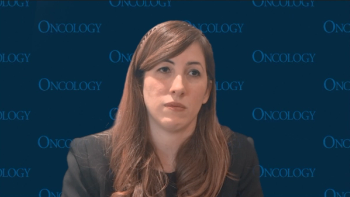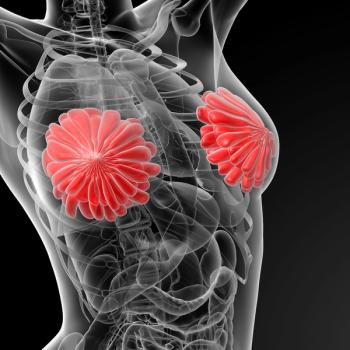
- ONCOLOGY Vol 12 No 7
- Volume 12
- Issue 7
Accurate Mammogram Reading More Likely Following Mammotome Biopsy, Study Indicates
Mammotome biopsy causes significantly less internal breast scarring than open surgical biopsy and is less likely to interfere with a radiologist’s ability to read subsequent mammograms, according to a new study presented at the third annual
Mammotome biopsy causes significantly less internal breast scarring than open surgical biopsy and is less likely to interfere with a radiologists ability to read subsequent mammograms, according to a new study presented at the third annual Multidisciplinary Symposium on Breast Disease in Amelia Island, Florida, a medical conference of radiologists and surgeons specializing in breast disease.
The study indicates that, compared to Mammotome biopsy, internal scarring from open surgical breast biopsy is more than twice as likely to influence the radiologists ability to read a subsequent mammogram. Researchers also found that open surgical biopsy caused nearly twice as much internal scarring as did Mammotome biopsy.
Scarring and Mammography
The study suggests that women who have open surgical biopsy are more likely to develop changes on future mammograms than are women who have had a Mammotome biopsy, said lead author Catherine A. Kusnick, MD, assistant professor of radiology at the University of Iowa College of Medicine. These changes may require additional mammographic evaluation on future mammograms.
Scarring from open surgical biopsy influenced the confidence level in reading mammograms in more than 72% of cases studied. In contrast, Mammotome biopsy influenced the confidence level in only 29.5% of cases studied.
"This is a significant improvement. Post biopsy scarring can sometimes mimic or mask subtle breast cancers. The reduced rate of scarring from Mammotome biopsy compared to surgical biopsy may make it easier for radiologists to read future mammograms," said Dr. Kusnick.
Researchers identified scarring on one-half of mammograms following open surgical biopsy, as compared with only 27.3% of mammograms following Mammotome biopsy.
The study involved five radiologists specializing in mammography but with different experience levels, who were blinded to biopsy technique, breast lesion location, and identifying features. The radiologists examined two sets of mammograms, 14 surgical and 19 Mammotome cases. Even with the relatively small number of cases, the methodology and findings indicate significant statistical accuracy for the study, Dr. Kusnick said.
Minimally Invasive
Mammotome biopsy allows women to have a quick, minimally invasive breast biopsy. During the half-hour, outpatient procedure, the physician inserts a sampling probe through a small nick in the patients breast, which does not have to be repeatedly removed and inserted. Following the biopsy, the patient goes home with a small adhesive strip to cover the skin nick.
Open surgical biopsy, by comparison, is a more costly, time-consuming process that requires anesthesia, an operating room, and sutures.
Articles in this issue
over 27 years ago
Expertise of Genetic Counselors Clarifiedover 27 years ago
New Gene Therapy Produces Marked Regression of Tumors in Animalsover 27 years ago
Cryotherapy for Liver Tumorsover 27 years ago
Update: HIV Counseling and Testing Using Rapid Tests--U.S., 1995over 27 years ago
3D Structure of Tumor-Suppressor Protein Generated on the ComputerNewsletter
Stay up to date on recent advances in the multidisciplinary approach to cancer.

















































































